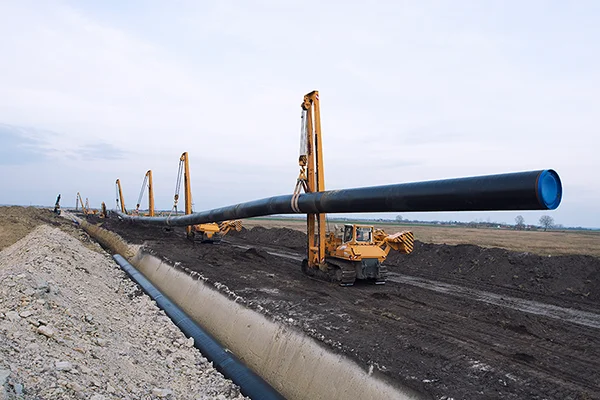Geospatial AI: From Natural Resources to Telecom, Utilities to Space Imagery Analysis
Multi-industry solutions propelling growth and reducing costs on a single platform
The two technologies are fueling mutual advancements and finding multiple applications across industries
The relationship between Artificial Intelligence (AI) and Geographic Information Systems (GIS) is almost symbiotic. A powerful technology with wide applications in a huge number of industries as diverse as oil and gas exploration, photogrammetry, Light Detection and Ranging (LiDAR) and mining, GIS is a natural fit for novel use cases using AI, particularly in areas such as spatial analysis. Conversely, AI provides sophisticated and hitherto unknown capabilities to the mature field of GIS.
Use Cases for AI in GIS
With cloud-based computing driving down the costs of processing power and memory; and communication superhighways making data transfer costs negligible, a range of AI-based technologies have been transforming GIS. Machine learning is a type of AI. ML systems have the ability to learn and improve from experience without being explicitly programmed to do so. ML programs are impacting GIS applications in a huge way. They can be categorized as:
- ML applications: Applications that use Machine Learning (ML) to solve problems in three key areas of geoprocessing: classification (e.g., using support vector machine algorithms to create land cover classification layers); clustering (identifying meaningful clusters in large data sets) and prediction algorithms (e.g., calibrating prediction factors using geographically weighted regressions). ML is an umbrella term for data-driven algorithms that learn from data to give us insights.
- Deep Learning applications: Applications that perform analysis of imagery (e.g., image classification and object detection) from satellites, drones and aerial photography is nearly impossible to do in more traditional ways. Deep Learning is ML with neural networks that resemble the human brain and is used in applications such as computer vision.
- Semantic segmentation software – a moniker for another computer vision-derived application. The ability to classify each pixel in an image as belonging to a particular class affords data scientists the ability to extract road networks from satellite imagery or to perform land cover classification.
- Instance segmentation programs – such programs make precise markings of object boundaries, and can be used to improve basemaps by adding building footprints or to reconstruct 3D models of buildings from LiDAR data.
ML models are transforming GIS in unprecedented ways: from identifying and classifying natural resources, identifying clusters, reconstructing 3D models of building, digital mapping solutions, utilities in real estate and more, ML-supported GIS applications are being deployed on the field.
Benefits of AI in GIS Applications: Digital Maps
ML-based technologies such as digital mapping, natural resource identification, 3D modeling, cluster identification, or combinations of them, are being widely used to develop real-world applications in spatial analysis. Geospatial data has helped a wide variety of industries acquire greater visibility into their key assets and optimise their supply chains. For instance, the creation of digital maps involves automatic extraction of road networks and building footprints. Such maps are used to provide driving directions in mobile applications such as Uber, Lyft or Indian cab aggregator Ola. Super-resolution networks that provide enhanced zoom levels and increased clarity of satellite images form another application.
Such advances in spatial analysis have fueled the coining of a new term in the geospatial world called Location Intelligence. This term covers real-world applications ranging from logistics and retail to government. Cross-sector research can often yield startling insights: in one instance, researchers in Los Angeles analysed traffic patterns over different times of the day with respect to the concentration of harmful particles in the air to predict when pollution levels became harmful. This helped city officials issue air quality warnings.
The Telecommunications industry has been a major adopter of AI-driven GIS. Solutions such as market segmentation, demand forecasting systems, marketing, capital management and networking engineering solutions are today driven by insights from geo-spatial AI. Modern-day metropolises have increased number of high-rises – both office buildings and residential apartments. Capturing the footprint of a building is an essential task for telcos for capacity planning and estimation tasks. Geospatial AI performs this task admirably.
New form of Business Intelligence
Consider GeoAI, a new form of business intelligence that leverages ML based on geography and is being deployed in Kuwait to help citizens navigate the congested streets of the tiny country. In this application, the ML model was fed traffic and location data (as reported by thousands of Kuwaiti drivers), based on which it ‘filled in the gaps’ to create a more reliable, real-time driving instructions. GeoAI is also being used to help farmers improve their crop yields, with predictive policing, and in disease prediction.
GeoAI is even finding application in healthcare. Public health officials in smart cities are using geo-tagged data from social media streams, IoT sensors and satellite imagery in combination with wearables or personal sensors to monitor public health, disease prediction and epidemic prevention.
AI-driven Oil & Gas Exploration
The Oil & Gas (O&G) industry has been a late adopter of AI/ML technologies, seeing it as risky and unproven. The industry being heavily driven by human operators, the general perception among O&G leaders is that the digital fluency and skilled resources required for AI/ML adoption are lacking.
However, some trend-setters are bucking the norm and making path-breaking efforts that are bearing fruit fast. For instance, unique ‘knowledge graphs’ from Sandy, BP’s cloud-based geoscience platform, use geology, geophysics, reservoir and historic project information to support oil & gas explorers with insights about BP’s subsurface assets. Similarly, the UK Oil and Gas Authority (OGA)’s first National Data Repository (NDR), is one of the largest ever single open data releases, and contains 130 terabytes of geophysical, infrastructure, field and well data covering over 12,500 wellbores, 5,000 seismic surveys and 3,000 pipelines. The OGA plans to use this repository to uncover new oil and gas prospects and enable more production from existing infrastructures.
The sector is ripe for AI/ML opportunities, including in human resources, cost allocations, vehicle and equipment maintenance, portfolio management, subsurface (well data) analysis and other important areas.
Geospatial Technology Transforming Urban Development
Geospatial AI is transforming the real estate industry in powerful ways. The technology is influencing home buyers’ decisions, helping retailers plan opening and closing of retail outlets, and supporting urban planning and property tax levies by local governments. In such AI applications, different sources of data including census data, survey data and traffic data combined with internet traffic data, purchase data, mobile data, and now, geosocial data (location-tagged social media data) are fed into ML models. Patterns and relationships are discovered to help with predictions and forecasts. Such patterns, for example, can reveal the greenest neighborhoods in a city. Descriptive models can be used to reveal hidden correlations – a house hunter could find a neighborhood in Atlanta that most closely mirrors his old neighborhood in New York.
Retail chains use geospatial AI to pick the exact neighborhoods where they can open new branches of their chain, or close stores that are not profitable or are predicted to not do well. Geosocial analysis can help make major real estate buy or sell decisions, even for homebuyers. Urban planners can use geosocial analysis to discover the ‘personalities’ of neighborhoods – and plan for zones and buildings as per the real needs of communities. City officials and tax authorities can (and have been known to) use geospatial analysis to determine if homeowners are compliant with zoning regulations and property tax levies are accurate – for instance, one model discovered properties with new swimming pools that had not been reported to the city.
Future Outlook
The AI+GIS combination is headed into previously uncharted territories and opening up new opportunities for governments, private organizations and researchers across multiple industries and segments. The potential benefits are huge, cost savings, reduced time to service or product delivery, and resource optimization’s.
Challenges persist, including those of infrastructure and cost, disparate data sources, language barriers (as most data sources are in English, non-English speaking countries find adapting difficult) and human challenges – prime among them being a lack of AI/ML-trained resources among GIS specialists and even decision makers.
A good way of overcoming such challenges is to partner with engineering firms that offer both domain expertise and technology advantage. Cambay Engineering Services is one such firm with decades of experience in GIS tech; as well as dedicated teams of data scientists, AI/ML experts and modelers with demonstrable expertise in AI+GIS applications such as remote sensing, photogrammetry and LiDAR, mineral exploration, seismic data processing and interpretation and geophysical data management services.
Talk to a Cambay representative to discover how we can help you with your geospatial analysis requirements.





